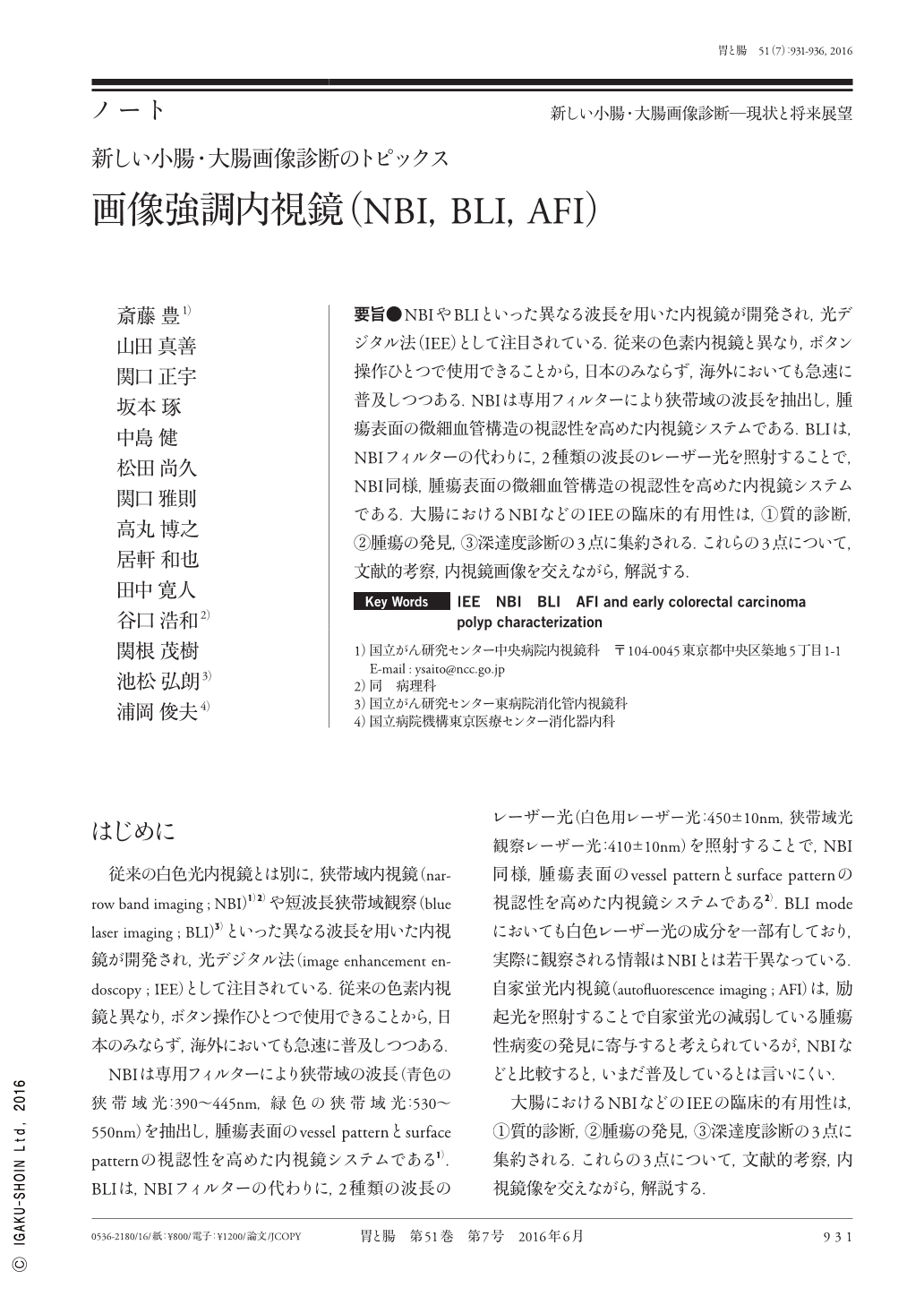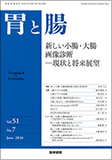Japanese
English
- 有料閲覧
- Abstract 文献概要
- 1ページ目 Look Inside
- 参考文献 Reference
- サイト内被引用 Cited by
要旨●NBIやBLIといった異なる波長を用いた内視鏡が開発され,光デジタル法(IEE)として注目されている.従来の色素内視鏡と異なり,ボタン操作ひとつで使用できることから,日本のみならず,海外においても急速に普及しつつある.NBIは専用フィルターにより狭帯域の波長を抽出し,腫瘍表面の微細血管構造の視認性を高めた内視鏡システムである.BLIは,NBIフィルターの代わりに,2種類の波長のレーザー光を照射することで,NBI同様,腫瘍表面の微細血管構造の視認性を高めた内視鏡システムである.大腸におけるNBIなどのIEEの臨床的有用性は,①質的診断,②腫瘍の発見,③深達度診断の3点に集約される.これらの3点について,文献的考察,内視鏡画像を交えながら,解説する.
NBI(narrow band imaging)and BLI(blue laser imaging)are two different image enhancement systems that use different light wavelengths unlike standard white light imaging. When these techniques are applied to endoscopies, the methods are collectively known as IEE(image enhancement endoscopy). IEE has been adopted worldwide because it is easy to use.
NBI uses a special optical filter that converts white light into two narrow-band beams of wavelengths 415 and 540nm. These enable absorption by hemoglobin and enhance the contrast between the microvessels and surface pattern of tumors. In contrast, BLI uses two different wavelengths of laser light to enhance the microvessels and surface pattern similar to NBI.
In colorectal diagnosis, IEE is considered to be useful in the following three aspects:polyp characterization(differential diagnosis between non-neoplastic and neoplastic lesions);tumor(polyp)detection;and depth diagnosis for early cancer.
This brief report uses endoscopic images and literature review to summarize the usefulness of IEE in the colorectum with regard to these three aspects.

Copyright © 2016, Igaku-Shoin Ltd. All rights reserved.


